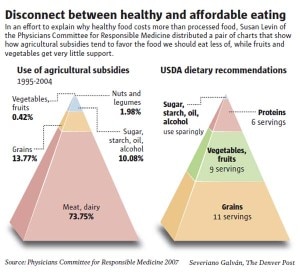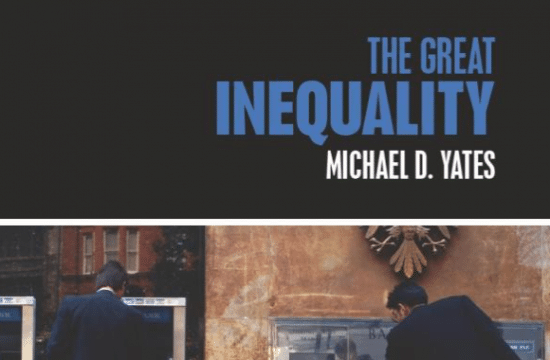We were in Torrey, Utah hiking in Capitol Reef National Park. We got a room for a week at the Affordable Inn for a reasonable rate, which surprised us, since it was near the beginning of the short tourist season. We decided to call our friend Dwight, who lives about an hour away, and ask him if he wanted to take a hike with us. We hadn’t seen him in a few years, so this would give us a chance to catch up. He came, and we took an eight-mile hike into Spring Canyon.
Dwight is tall and thin and twelve years older than I. He said that he hadn’t been hiking in a while, but he showed no more fatigue when we were done than Karen and I, and we had been hiking regularly for months. I told Dwight that he was an inspiration; he made me think that I could continue to do strenuous exercise for a long time to come.
There used to be a lot of men and women like our friend. Thin, wiry, fit, able to do hard physical labor outdoors, to hike, ski, swim. Every now and then, we see an older man or woman, walking proud and erect, slim and trim. In the west, the man might have on boots, a cowboy hat, denim shirt, and stiff blue jeans. Like our late friend Val from Tucson. Today, such people look strange and out of place. Modern America is the land of the unfit.
You might not notice how physically limited we have become if you walk down the streets of almost any small town, but this is only because so few people will be walking. If you want to see us as we are, go to the mall, a grocery store, a restaurant, or a bar. The girth and immobility of men and women, young and old, is astonishing.
Before looking at some data, let me give some words of caution. First, any measure of unfitness is arbitrary. For example, a common definition of obesity uses the Body Mass Index (BMI). This is calculated by taking your weight in pounds, dividing this by the square of your height in inches, and multiplying this quotient by 703. A person with a BMI greater than 25 is considered overweight. A BMI greater than 30 signals obesity, and one more than 40 extreme obesity. Right now, I am 5’10” (70 inches) tall and weigh 173 pounds. My BMI is (173/4900) x703 = 24.8. I would be statistically obese if I weighed 210 pounds and extremely obese if my weight was 279 pounds or greater. If I weighed 210 pounds, there is no reason why I couldn’t still be physically active. I once weighed 207 pounds, and I played basketball several times a week and walked every day. I did have more difficulty breathing, and I had less energy than when I was lighter, but I wasn’t ready for a cane or a wheel chair. Second, there are millions of physically unfit people who are neither obese nor overweight. I see many children and teenagers who are not overweight but have little or no muscle tone. So while physical condition and weight are, beyond some weight, negatively correlated, it would be wrong to assume that a thin person is healthy.
The United States leads all rich nations in the fraction of people who are overweight and/or obese. In 2007, nearly 27 percent of all adults in the United States were obese, a more than 7 percentage point increase since 1997. Childhood obesity has risen dramatically; among 6 to 11 year olds and in teenagers, it has tripled in the past twenty years, with both rates now approaching 20 percent. Even kids 2 to 5 have a near 13 percent probability of being obese.
Obesity varies by race, ethnicity, income, and geography. Blacks, Hispanics, and Native Americans have higher rates than whites. Poorer people are more likely to be obese than those with more money. States in the South and Midwest have the highest rates of obesity; nine states have rates of adult obesity of at least 30 percent—Alabama, Arkansas, Kentucky, Louisiana, Mississippi, Missouri, Oklahoma, Tennessee, and West Virginia. Only Colorado has a rate less than 20 percent (click on this hyperlink to see an amazing state map).
Our observations are in accord with the data. In Estes Park, Yuma, Las Vegas, Elko, Fresno, Buffalo, Packwood, nearly everywhere, we see men and women carrying so much weight that they cannot walk properly or at all. The number of people using canes, walkers, and wheel chairs (both manual and motorized) has, in terms of what we have seen, risen substantially. It is not possible to go to the Walmart in Saint George, Utah, any casino in Nevada, or the streets of Portland, Oregon and not see the extremely obese struggling to shop, to gamble, and to navigate city sidewalks. Overweight youngsters become more common every year, and it is rare now to see kids actively playing. We have often remarked to one another that parents have children in strollers who should be walking. When Karen worked in daycare centers in Pittsburgh, she was surprised that older infants could not turn themselves over. If she asked older kids what they had done over the weekend, they invariably said that they had watched television or played video games. Four and five year-olds would cry when told to line up for the trip to the outdoor playground.
There are both personal and societal costs associated with obesity and inactivity: increased risk of many diseases, including diabetes, and a rising likelihood of joint failure, not to mention depression and other mental health problems. The costs here may spill over onto the general public, as higher health insurance premiums or lost work time and production. The hyperlink provides details.
Look at the nearby photograph. It was taken in the early 1960s in my hometown. I know the boys in it. They are playing stickball in an alley. Like me, they engaged in strenuous physical activity every day. They are all, by today’s standards, very thin. The next time you are out walking and see a group of teenagers, see if they look like my pals. I’ll bet they don’t. Few of my high school classmates were overweight, much less obese, and most were active in sports and games. The same was true in college. Not so anymore. We don’t see many hikers on most of the trails we frequent, and a disproportionate number of them are from other countries. Meeting a person as old as, or older than, I is always a special occasion. 
Why have we become such an overweight and unfit nation? The obvious answer is that we are consuming more calories (click on hyperlink for story) and exercising less. Both are true. We eat more high-calorie snacks, take more meals in restaurants, consume tremendous amounts of fast foods, drink too much soda and beer, have jobs that make few physical demands, and do not walk much. However, this is superficial information. The important question is why are we eating more and moving our bodies less. There is a vast literature here, so I will confine my comments to those consistent with our observations.
First, there is money to be made. As with the prison/parole/probation system, once we began to gain so much weight and exercise so little, forces came into play to convert the fat into cash. Tens of billions of dollars are spent on dieting and exercise books, magazines, and videos, diet plans, rehab centers, counselors, doctors, surgeries of various kinds, special equipment and furnishings, and drugs. Obese people have become spectacles on television shows such as Celebrity Fit Club, Biggest Loser, Dance Your Ass Off, and Brookhaven Obesity Clinic. Oprah Winfrey’s never-ending weight saga has itself probably generated hundreds of millions of dollars. Even gluttony is a money maker, with shows like Man Versus Food and Diners, Drive-ins, and Dives glorifying the intake of large amounts of calorie-laden and artery-clogging slop.
The fat/fitness business is built upon the assumption that overweight and unhealthy people are responsible for their conditions, but with the right program(s), they can change their self-destructive ways. What is almost never considered is that there are larger social forces at work.
One contributing factor is work. The United States lead the rich nations in hours of work per year. The purchasing power of wages has been flat for more than thirty years, and this has put pressure on households to send more members into the labor force, take second job, and work longer hours. Most jobs offer little intrinsic satisfaction, and employers are always on the lookout to make employees work harder. This raises the stress level at work, and the stress finds its way into the home. Long hours, not enough money, and stress are a recipe for weight gain and physical inactivity. Add the fact that, after decades of advertising aimed at the denigration of home-cooked meals, many people do not know how to cook. They cannot follow recipes. Karen once worked as a nanny for a nurse who did not know how to bring water to a boil to cook potatoes. So eating out, using prepared foods, or ordering pizza become the rule rather than the exception they were when I was a child. A person doing mind-numbing labor all day is going to watch television, play video games, surf the web, and eat snacks until bedtime. Then do it all over again the next day. When we stayed at hostels along the Pacific coast, we met Europeans on long, legally mandated, and paid vacations. They had time to hike, decompress, and enjoy life. In the United States there are neither mandatory holidays nor vacations, and the labor movement long ago gave up the struggle for a shorter workday and is now too powerless to resume it. Interestingly, the Europeans made full use of the hostel kitchens, preparing their meals from foods they bought at local grocery stores or farmers’ markets. With rare exceptions, the foreigners were much closer in physical appearance to what people here looked like fifty years ago.
Consider too that it is not always easy to eat healthily or exercise regularly. This is especially true for poor people. Poor urban neighborhoods often do not have grocery stores, so residents either have to travel long distances to stores in richer areas or shop at high-price convenience stores, where the food available is not conducive to good health or a trim waistline. In poor towns, the grocery stores themselves are full of convenience foods; produce is typically of inferior quality. The geography of such places might make outdoor exercise difficult. There may be no parks or playgrounds, and the streets might be dangerous. When you are poor, life is stressful, and again, this will likely correlate positively with weight gain and inactivity. What is more, inadequate income translates into inadequate kitchens, food storage space, and cooking equipment. And as my example below makes clear, feeding a family with good food is expensive, precluding the poor from doing so.
Then there is what we might call the “food-industrial complex,” which includes landowners, farms, food distribution, equipment manufacturers, government agricultural policies, government regulation of agriculture, meatpacking, university and corporate research, grocery stores, and restaurants. No stone is left unturned in converting our need to eat into profits. For example, human beings have an affinity for fats, salt, and sugar. Food researchers have developed recipes that take maximum advantage of this, creating foods that eaters will crave and gobble down in large servings so fast that their brains won’t have time to register that their stomachs are full. Similarly, fast food restaurants supersize everything because the addition to price is greater than the addition to cost, and consumers are tricked into thinking that they are getting a bargain. The eating and drinking go together; the food has so much salt in it that you crave cold liquid. Try eating Long John Silver fish without something to drink. The soda and fast food companies, often the same, give money to our schools in return for product placement in vending machines and cafeterias. Today so many people consume so much soda that just cutting it out of a diet would, other things equal, produce considerable weight loss. In many towns, we have seen people buy soda in half-gallon containers. One woman in Richfield, Utah had a container too big to fit under the dispenser, so she had a smaller cup that she used to fill the larger one. According to the store manager, she did this twice each day. And while the schools promote the consumption of fattening food and beverages and serve bad food in their cafeterias, they make little effort to provide decent physical and nutrition education, education that could be used for a lifetime.
Public agricultural subsidies and factory farming have generated the low cost production of hundreds of billions of calories of food, far more than would be needed for our social and biological reproduction. Government subsidies go to crop, dairy, and meat production that can be converted into cheap, high calorie food. Look at the chart I have reproduced from an article in the Denver Post. It speaks for itself. (Click on image to enlarge it)
Calories produced have to be sold. It is no accident that subsidized corn is converted into a ubiquitous ingredient in the foods we eat: corn syrup. Or that subsidized cattle farming and factory beef operations find their way into cheap hamburger and fast-food bargains. Massive advertising makes sure that this happens. The money spent just on advertising by the fast food purveyors (several billion dollars) would go a long way toward providing our school cafeterias with better food, training school personnel to prepare it, and teaching children the basics of good nutrition. But this would interfere with corporate profits, so it is not done.
In the 1950s, a typical middle-income family spent about a third of its budget on food. Today, this ratio is less than one-sixth. Much of this reduction is due to the falling price of food, and this in turn can in part be attributed to government subsidies and factory farming, both of which reduce the unit cost of production. Well, you say, what is wrong with that? Nothing, if the food was of high quality and nutritious. But it is not. When we consider that wages have been stagnant for so long, the production of cheap food starts to look suspicious. Karl Marx showed long ago that employers try to force wages to the lowest level possible, an amount equal to whatever a particular society considers to be subsistence. Subsistence requires sufficient food. Therefore, ways must be found to keep prices low enough that a subsistence wage rate will pay for adequate sustenance. If this is not the case, one thing will happen and another might. The workers will starve and not be able to work hard or long enough to ensure profits. They might also revolt; hunger may be the straw that breaks the camel’s back. Low food prices allow poor people to eat enough to live and work, and they forestall rebellion. The food keeps us just healthy enough to work but too unhealthy to think clearly and act in our own interests.
Let me end this essay with a provocation. There is a dirty little secret of life in the United States. We hear from politicians and pundits in the media that there is a “real America” out there, of small towns in the “heartland” of the country full of hardworking and God-fearing men and women with the same heroic qualities as the founding fathers. But when you go to these places, you find something different: dead and ugly downtowns, empty streets, shabby houses, limited job opportunities, poor services and social amenities, pathetic newspapers, and second-rate schools. Such towns stifle creativity and broadmindedness. For many people, life in the heartland is harsh and boring. They compensate with alcohol, drugs, and food. The food available to them, in both grocery stores and restaurants, is of generally poor quality. Alice Waters, the famous Berkeley chef and fresh-food guru, claims that anyone can eat good food, anywhere in the country. I’d like to see her do this while living in Ely, Nevada, with a crappy job and not enough money. There is one grocery store, and what is available in it won’t tickle Alice’s palate. We did see organic red peppers in the produce section; they were $6.99 apiece. What would you do if you were a mother with three kids and a husband—feed the family red peppers or the forty-four servings of Kraft macaroni and cheese she could buy for the price of a single pepper? There is a good chance that, given the poor education she likely endured, she might not know how to shop efficiently by comparing unit prices. She might not know which ingredients in what she buys are good for her and which are not. She and her family have been subjected to such massive amounts of advertising for fast food (and this is what is probably served in the school cafeterias) that it is not surprising that they eat many meals at McDonalds and Taco Bell. When she is at home or at her low-wage, stressful job while the children area in school, would it be surprising if she eats too much? That she and her husband drink too much? Or take prescription painkillers or antidepressants, both of which will slow their metabolisms and make them more likely to gain weight? Will stress, strain, and boredom make them rush to the gym to exercise, or take a long hike?
U.S. capitalism is vicious and inhumane. It is the model of a dog-eat-dog world, nasty and brutish. It produces physically and mentally unhealthy human beings. No wonder we are fat. As the country enters a prolonged period of economic and political stagnation, look for matters to get worse.











Fantastic piece – thanks for writing it up.
Thanks, Dan, and for posting it on your facebook page too. Michael
I second this. There are many issues in the post that could each individually be written about. It is very interesting to think about the role of privatized profit when analyzing trends in public health. Excellent post covering many topics, as well as to the main point: we as a bottom-line capitalist society, are subsidizing dis-health.
Health over Profit!
Another terrific piece, Mike. The number of obese people was one of the most striking features on a recent road trip we took to the States. Even in the state and national parks, where you would least expect to find it, most visitors, it seemed, were not able to climb beyond the short paved level trails at the entrances. Canada is not quite as bad, but our trip to the US made us more aware of the of the growing numbers of the overweight here as well. Weight used to be a class marker; it was a sign of success if you were heavy, of poverty and a life of hard physical labour if you were thin. I was always exhorted to “eat, eat” when I was growing up. Weight is still a marker today, but things have been stood on their head; if someone looks fit, you assume they’re an urban professional, if heavy, from the poorest strata of the working class. Your analysis of the economic and sociological roots of the problem is top-notch.
We all live in complex systems that we’re only dimly aware of — and they collide without most of us even seeing them do so. Bokonon’s 53rd Calypso seems apropos:
“Oh, lion hunter
in the jungle dark,
and sleeping drunkard
in Central Park,
and a Chinese dentist
and a British queen
all fit together
in the same machine,
Nice, nice,
Such very different
people in the same
device!”
Just came back from a weekend visit to the LA County Fair, larger than most if not all STATE fairs. Amongst some of the multifarious culinary offerings were DEEP-FRIED TWINKIES AND OREOS, A KRISPY KREME CHICKEN
SANDWICH (why settle for a bun when you can have a DOUGHNUT?) ,
and lettuce not forget: CHOCOLATE-COVERED BACON. (When “sugar-cured” just isn’t enough!) To protest all of those high-cost, low-quality pseudo-foods, my girlfriend and I had dinner afterwards at Souplantation. No meat (though I’m NOT a “veggie”) and nothing fried. The sad part is, at 58 years of age,
I weigh less and am in much better physical shape than my ex-wife or our
two 30-something daughters (our son is more active and IS weight proportionate to height). My secret?: lifestyle choice…it’s as simple as that.
Yes, I like doughnuts, but when I choose to have them (which is on average about every other week) I limit myself to TWO and only TWO. Just like with tobacco, alcohol, or any of the other “controlled substances”, I NEVER crave
a candy bar or pizza slice or piece of apple pie in the middle of the night or
at 6AM breakfast time or even after work. As the anti-sex religious zealots
say about pre-marital sex: “Just say no!” Works for me.
Interesting and accurate analysis of America’s obesity epidemic, but isn’t eating still an act of choice awareness? It has evolved for all of the reasons you elaborate. What overweighters have lost is the concept of how proper nutrition is our most essential self care tool. For many eating has become mindless, and a means of dealing with life’s problems versus mindful as a source of energy and fuel for living. Individual change happens when one sees the “why” and integrates it into a healthy habit. Healthy eating is actually less expensive, provided you understand portion control.
As the nation’s infrastructure continues to collapse, the day will come when many won’t be able to afford to drive cars anymore.
That may be a good way for some to return to a healthier lifestyle.
The relation between real wages and the production of wealth is ever fascinating for me. Real wages are now below what they were in 1964. Productivity has, of course, gone up by about 3% year. Increases in productivity also result in the cheapening of commodities as less socially necessary labour time is embodied in them. This goes for food too. But a very interesting phenomenon appears to be taking place in the realm of food and nutrition, namely that the increasing commodification of food is leading to less nutrition as well as cheaper prices and of course, fatter workers. What is produced must be sold and selling is a about gaining market share with cheaper commodities.
Thanks for writing this piece, Fellow Worker. Of course, in Australia, the same process of commodification of food and the inevitable results are happening, along with the family lifestyles of kids staying inside to play or watch TV. Some of this is driven by the perception of greater threats to well being–crime. Lots of cop oriented TV here and the corporate news is largely dominated by stories of petty crimes involving violence–commodification of news, relentless cheapness and the need to sell the news to advertisers who want, marketshare. Our fear keeps us penned in, along with our kids. Kids in the streets are a rare sight. Back in my day, kids had breakfast then, went outside for the day to play, sometimes coming back for lunch and then back out again. I really wish this wasn’t happening; but it is. If it weren’t for good people like yourself, the whole schalmozzle would go relatively unnoticed.
Oh…you might want to adjust the verb here:
“In the 1950s, a typical middle-income family spend about a third of its budget on food.”
And, I notice that you do the same thing I do, putting “I” where it should be “me” e.g. “Dwight is tall and thin and twelve years older than I.”
Fellow worker, I could say the same thing about you (“If it weren’t for good people like yourself…)!
It is sad to see our elected government subsidizing this epidemic on one hand and attempting to mitigate the problem with a Let’s Move! campaign on the other.
An aspect of this issue not often noted is described below:
-“Do not to eat food produced by publicly traded corporations. Remember, large publicly traded food companies are producing food that is genetically modified, loaded with chemicals, growth hormones, drugs, trans fats, and other ingredients specifically and purposely created to increase your appetite, get you chemically addicted to the food, and make you fat. You cannot trust any of the mass-produced food they sell. Staying away from any brand name heavily advertised product is the best course of action. Knowing that every publicly traded large food company will use every deceitful and misleading technique, and fancy food label, to get us to buy their product and make us fat is reason enough to avoid supporting them by never buying their products.”
– No fast food, regional or national chain restaurants. This is the same as the previous rule. Virtually all the food available from regional and national restaurant chains and fast food companies is specifically designed to increase appetite, get us chemically addicted to the food, and make us fat.
K. Trudeau
looks disgusting. (didnt read the post). not pittsburgh no more. new class.
workimg class should overeat so i can write about ovreating. in the car. get a cheap ho’tel.
So still, the question is, how do we convince enough of such people that they deserve more than they are getting, when the very fat on their bodies is targeted laser-like for a campaign of cultural indoctrination which tells them they deserve nothing but a lonely death?
You said it yourself, kids cry when being lined up for the playground. Why? Because that is where they are subjected to a treatment analogous to the opening statement of “300”: “In Sparta, when a child is born, it is inspected. And if found to be puny, sickly, or misshapen, it is discarded.”
My wife and I used to go to karaoke in Fresno. And she has lately commented about how many of these acquaintances undoubtedly must have been making assessments about her “morbid obesity” while sucking down enough cigarettes to give themselves black lung and enough alcohol to slur their speech.
I just keep coming back to it. This is our population. If we are going to overturn anything, it is the population from which we must recruit. Enough of them have to be convinced to start taking risks along with us.
Maybe, in the end, what will shut down U.S. capitalism will be enough fat people having one big sit-in strike.
Imagine a whole fat nation singing “We Shall Not Be Moved”. Perhaps this is something to work for.
But they will only get there if they can be broken away from the belief they’ve so often been spoon-fed by their own oppressors: that what the left seeks is to slave-drive them out of their present state with Riefenstahlesque calesthenics on the premise of their own good. They have to be given permission to do what they can do now with the bodies they have, and know that this is good enough to be part of a movement, that they have an honored place at the table and are not quarantined in the “bad fatties” corner.
Now that’s sociology. Combining acute observation with the unraveling of the various and sundry causes of social reality. Why was this never done in my sociology classes? Why is this so hard to find on the Web?Why has sociology become like phrenology?
Great reporting, and undeniable.
Martin, That’s a nice compliment! Most academics don’t do much observing of the world around them.
You don’t mention vegetarianism, pescatarianism and veganism. Very telling. Nor the environmental costs of eating meat and higher on the food chain. Also indicative.
Why?
Red frog, Indicative of what? I’m not done yet. michael yates
ps You can add something substantive instead of casting aspersions.
Excellent insight; put it next to Sharon Astyk’s observations about bad food and lousy living.
Add to this the absolute dependence upon auto transport. Nobody walks, how can you in exurbia? The outcome is flab … I know, I’m flabby!
there are lots of cheap foods on the market that taste like crap but there are good quality ones too “”
you can always buy cheap foods on any supermarket these days because food production is mechanized already ;”:
I was looking for info with this on Msn and found your article. I found it nice clear. Many thanks
I have read some of the articles on your blog now, and I adore your style of writing a blog. I included it to my favorites web site list and will be looking at back again in the near future.